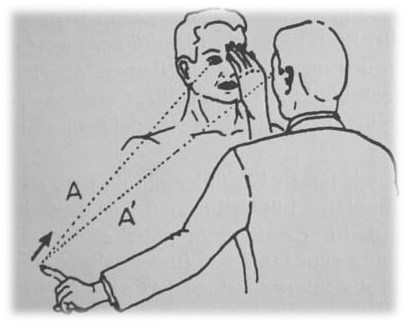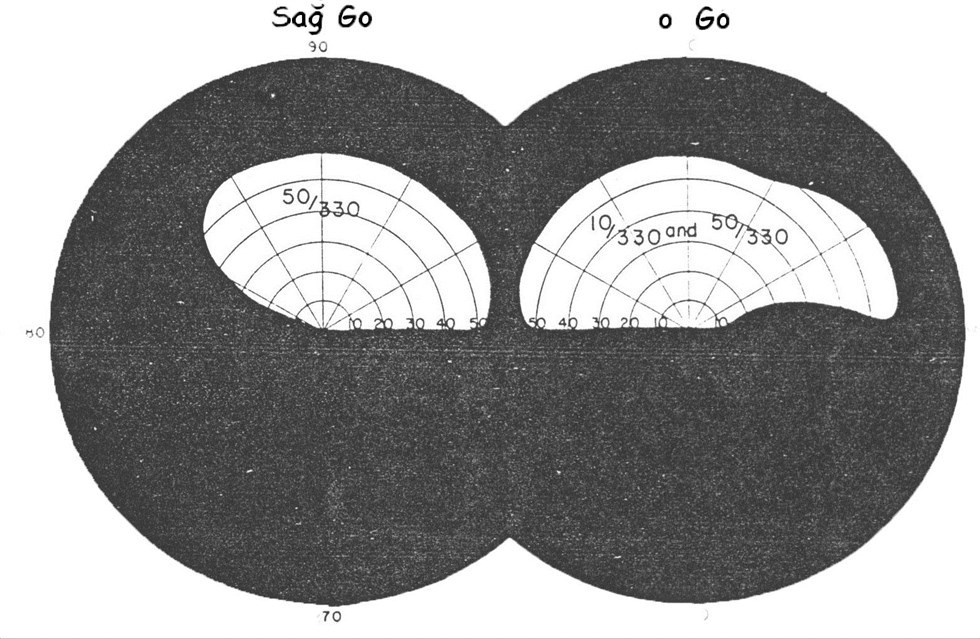 What is Visual Field?
What is Visual Field?
The visual field refers to the entire area that can be seen when focusing on a fixed point. In a normal eye, the visual field extends to the following ranges:
- Nasal side (towards the nose): 60º
- Lower side: 70º
- Upper side: 50º
- Temporal side (towards the temples): 90º
The widest part of the visual field is on the temporal side of the eyes, where there are no obstructing structures, such as the ears.
 Methods for Visual Field Examination
Methods for Visual Field Examination
-
Card Tests:
- The patient is asked to focus on the central point of a specially prepared card while observing the surrounding points.
- A well-known example of this test is the Amsler Grid. This grid has squares with 5mm sides, and a fixation point is placed in the center. When viewed from about 33 cm, if the patient notices any distortion, blurring, or missing lines, it could indicate an issue with the retina.
-
Confrontation:
- Two people sit facing each other and one person closes their right eye while the other keeps both eyes open. They look at each other directly, and the person with both eyes open is asked to detect objects approaching from the periphery.
- In this test, the examiner assumes their visual field is normal and observes how much of a reduction in the visual field the other person has.
-
Screen Tests:
- The patient is placed 1 meter away from a flat screen, and lights of varying sizes are directed at the screen to observe which parts of it the patient can or cannot see.
- This test helps in identifying areas where vision is lost or impaired.
Visual Field Defects (Losses)
Different issues in the visual pathways can lead to various types of visual field defects. Here are some examples:
-
Right Optic Nerve Lesion:
- If a problem occurs in the right optic nerve, vision loss will occur in the right eye, and "Defect Type 1" will manifest. However, vision in the left eye remains normal.
-
Right Optic Tract Lesion:
- In this case, the outer retina of the right eye and the inner retina of the left eye are affected, resulting in the loss of the central field of view in the right eye and the peripheral field of view in the left eye. This is called "Defect Type 3."
Visual field defects can appear in different parts of the visual pathways due to various diseases. As with other eye conditions, corrective refractive methods (such as glasses or contact lenses) are not effective in these cases since the loss of vision is caused by structural or neural issues rather than refractive problems.